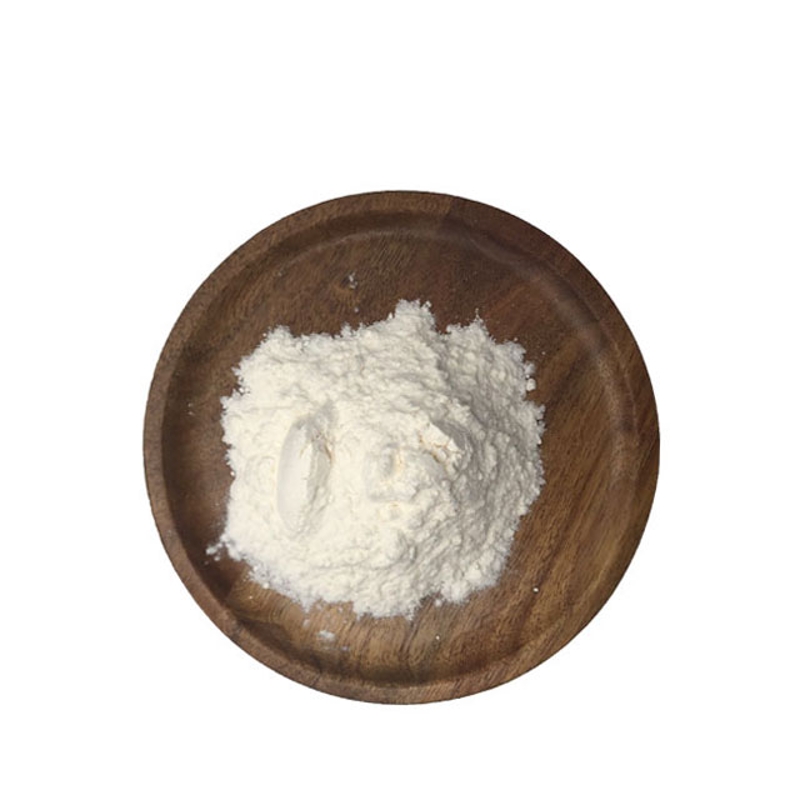-
Categories
-
Pharmaceutical Intermediates
-
Active Pharmaceutical Ingredients
-
Food Additives
- Industrial Coatings
- Agrochemicals
- Dyes and Pigments
- Surfactant
- Flavors and Fragrances
- Chemical Reagents
- Catalyst and Auxiliary
- Natural Products
- Inorganic Chemistry
-
Organic Chemistry
-
Biochemical Engineering
- Analytical Chemistry
- Cosmetic Ingredient
-
Pharmaceutical Intermediates
Promotion
ECHEMI Mall
Wholesale
Weekly Price
Exhibition
News
-
Trade Service
Recently, Li Wei, chief professor of Shanghai University of Traditional Chinese Medicine, published an article online in the international landmark journal GUT, "Eingy cell-derived CXCL3 promotes pancreatic cancer metastasis through a novel myofibroblast-hijacked cancer escape mechanism", revealing A new mechanism for promoting metastasis of the interaction of micro-environmental substitut components of pancreatic cancer tumors and a new strategy for the treatment of pancreatic cancer was found to target key links in the treatment of pancreatic cancer from the IL-33-ST2-ERK/p38-MYC-CXCL3 signal axis.
Pancreatic Cancer, known as the "King of Cancer," found that late, fast metastasis and poor prognosis are the three major problems restricting the clinical diagnosis and treatment of pancreatic cancer, 80% of pancreatic cancer patients are found to be late and metastatic, but the molecular mechanism of metastasis is not fully clear.
Pancreatic cancer is different from other solid tumors in that more than 90% of tumor tissue consists of substrings such as tumor-related fibroblasts (CAFs), macrophages (TAMs), neutrinoblasts (TANs), extracellular substations, which are like invisible "walls" tightly encased and interspersed around pancreatic cancer cells, forming a complex "tumor micro-environment" with pancreatic cancer cells to form a complex "tumor micro-environment" to protect the pancreatic cancer.
how to break down and dismantle this barrier and its resulting metastasis dilemma has become an important issue in the clinical treatment of pancreatic cancer.
The team led by Professor Li Wei first found a significant negative correlation between fibrosis and inflammatory cell immersion in pancreatic cancer tissue and the specific high expression of white methionin in pancreatic cancer tissue by analyzing tissue samples and TCGA databases of pancreatic cancer patients. 33 (IL-33), IL-33 and its subject ST2 stimulate the polarization of TAMS and promote pancreatic cancer metastasis through the IL-33-ST2-ERK/p38-MYC-CXCL3 signaling path.
Further studies have found that IL-33 stimulates TAMs polarization as the main driving force behind the upward addition of CXCL3, which can not only effectively mediate tams and CAFs, but also convert CAFs into myofibroblasts, promoting more powerful binding of myocytocytes to cancer cells, thereby promoting metastasis.
, this signal axis may serve as an independent predictor of prognostication in pancreatic cancer patients and as a drug target for the metastasis of pancreatic catheter cancer.
The study reveals new mechanisms and prevention targets for the treatment of pancreatic cancer metastasis of substitut components in the micro-environment of tumors, and provides new ideas for tumor therapy, and the treatment strategy is expected to improve the cure rate and prognostication of cancer patients.
Joyingly, based on the pancreatic cancer metastasis pathways and new mechanisms found in the study, Professor Li's team has initially screened out effective chinese medicine compounds and active ingredients, suggesting that Chinese medicine has significant application prospects in the treatment of malignant tumors such as pancreatic cancer.
Professor Li Wei believes that "for clinically incurable pancreatic cancer, it has broad clinical prospects and application value to look for Chinese medicine to prevent and control the metastasis of pancreatic cancer from the perspective of regulating the micro-environment of tumors".
about Li Wei, male, M.D., chief professor, chief physician, doctoral tutor, Shanghai University of Traditional Chinese Medicine.
director of oncology department, director of oncology research institute and executive director of the Institute of Chinese and Western Medicine, Shanghai University of Traditional Chinese Medicine.
has been engaged in oncology research at Cornell University in the United States and oncology molecular pharmacology at University of South Florida.
Enjoy the special allowance experts of the State Council, selected the national 100 million talent project, the national health and family planning outstanding contribution of young and middle-aged experts, the National Administration of Traditional Chinese Medicine key subject leader, Shanghai outstanding academic leader, Shanghai leading talent, Shanghai medical leading talent, Shanghai Chinese medicine leading talent and so on.
has presided over a number of national natural science key international cooperation projects, key projects, Shanghai to further accelerate the development of Chinese medicine three-year action plan key projects 1, Shanghai colorectal cancer Chinese medicine specialty (special diseases) alliance project 1, provincial and ministerial key major projects and other 36.
research results won 15 science and technology awards.
won more than 16 national invention patents.
published more than 360 papers in Cell Metablism, Nature Communications, PNAS, BJC and other domestic and foreign publications, SCI included 95 articles, with a total impact factor of more than 406 points, a single maximum impact factor of 22.415, and five monographs.
as the first guidance teacher to train a total of 11 doctoral students, 37 master's students, by shanghai outstanding graduates 3.
original link Sun X, He X, Zhang Y, et al. Inflammatory cell-derived CXCL3 promotes pancreatic cancer metastasis through a novel myofibroblast-hijacked cancer escape mechanism. Gut Published Online First: 10 February 2021. doi: 10.1136/gutjnl-2020-322744 Shanghai University of Traditional Chinese Medicine Source: Shanghai University of Traditional Chinese Medicine Copyright Notice: All text, images and audio and video materials on this website that state "Source: Mets Medicine" or "Source: MedSci Originals" are owned by Mets Medicine and are not authorized to be reproduced by any media, website or individual.
all reprinted articles on this website are for the purpose of transmitting more information and clearly indicate the source and author, and media or individuals who do not wish to be reproduced may contact us and we will delete them immediately.
at the same time reproduced content does not represent the position of this site.
leave a message here







